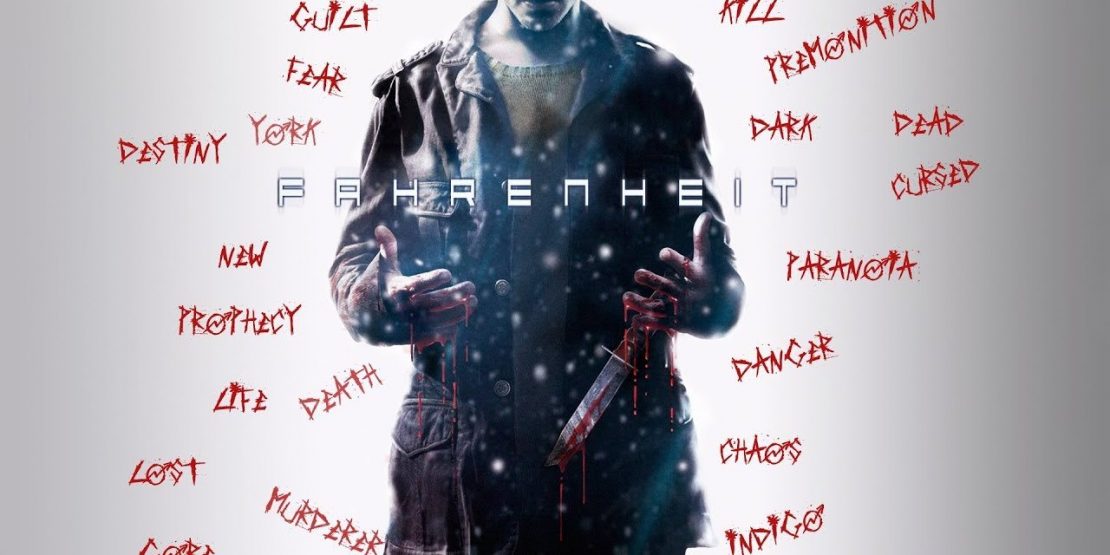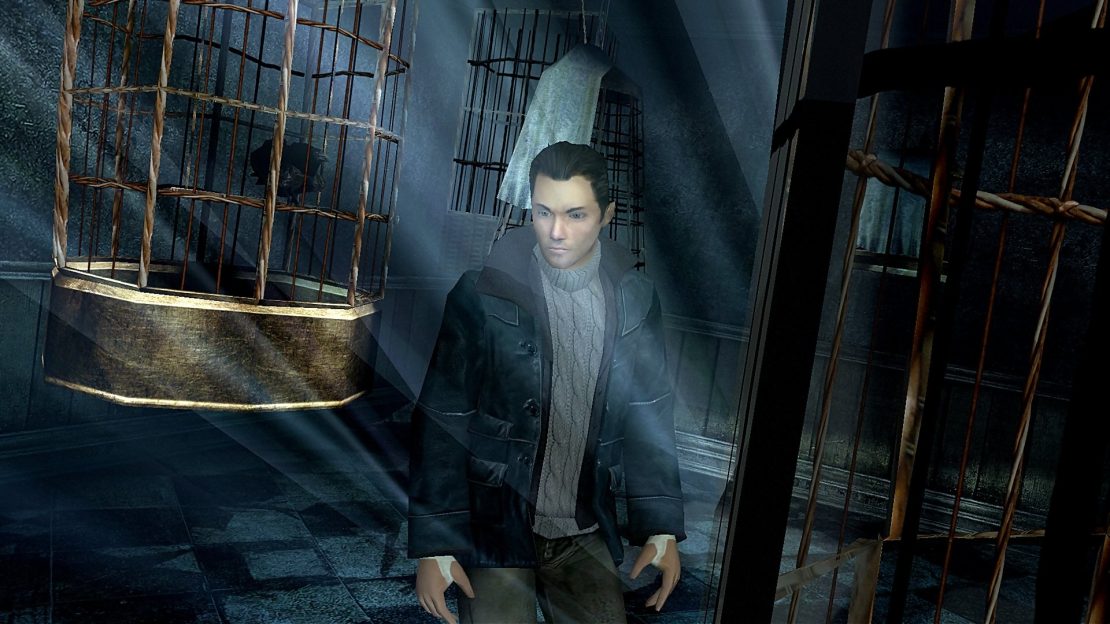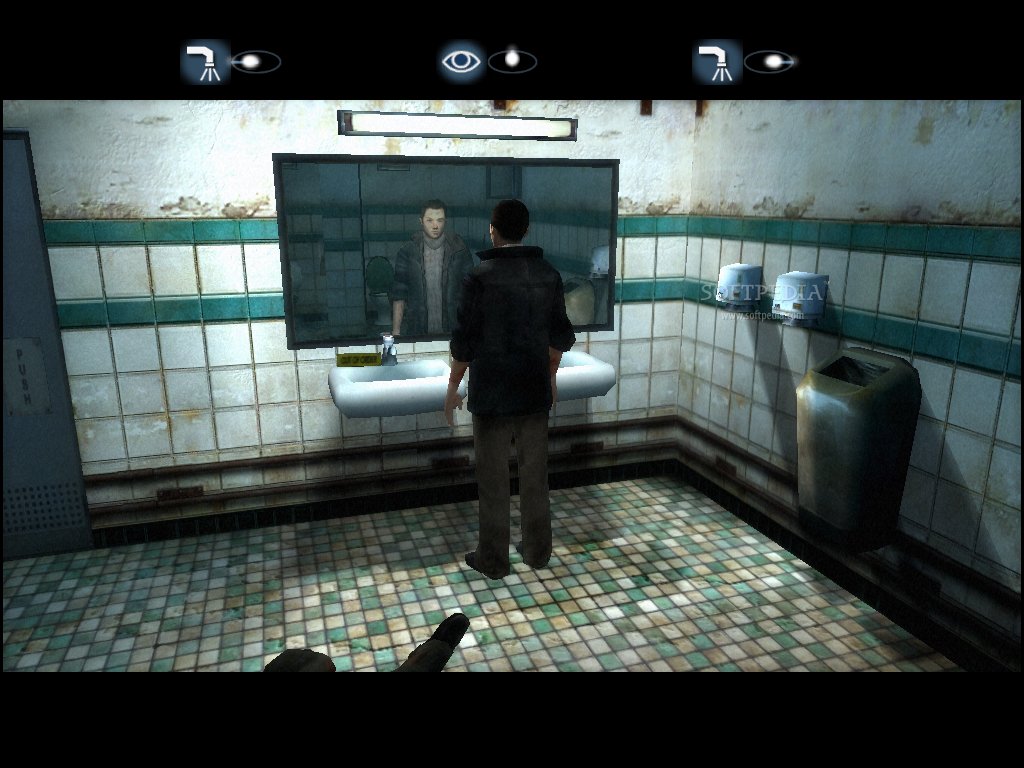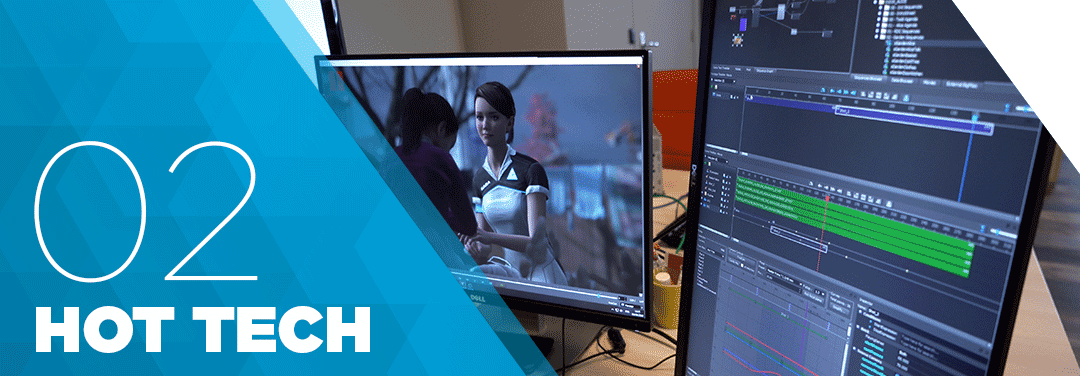QD Reacts: 15-Year Anniversary of Fahrenheit/Indigo Prophecy

We’re not celebrating our 15th anniversary every day, and regarding Fahrenheit / Indigo Prophecy, this big day was this week ! Officially born on PlayStation 2, Xbox and PC on the 16th of September in 2005, the game also marks the birth of the “Interactive Drama” genre, which laid the foundations for the signature Quantic Dream experience; a major milestone in the life of our studio, but also of its teams. With 15 candles to blow out, it’s the perfect opportunity to reflect back on the creation of this game, with a few people who lived this beautiful adventure from the inside.
First question, very simple: what were you doing on Fahrenheit?
Sophie Buhl – Head Of Production
At the time I was “Scripting Manager,” a role we now call “Lead Game Building.” It’s the department in charge of the game’s architecture; on Fahrenheit, it was my job to get all the elements – settings, characters, animations… – to be able to assemble them, literally build the game sequence by sequence.
Christophe Brusseaux – Artistic Director
I joined the Quantic Dream team as “Lead Sets,” the art direction of the sets, in March 2001, at the very beginning of the development of Fahrenheit. It was a small team of about forty people in total, working very organically, for a rather ambitious project at the time. Being quite multidisciplinary, I quickly became very involved in many areas: interface, concept art, art direction, in addition to my role as set supervisor.
Jean-Charles Perrier – Chief Technology Officer
I was an Xbox programmer, which means I took care of everything specific to that console. I also worked on the collision system, memory management, cameras, some aspects of the gameplay, and a lot on resolving many issues we faced during the production. The team was much smaller at the time, so we all had to work on many aspects of the game, in a fairly large scope.
What does Fahrenheit mean to you?
Sophie
I would say that after the release of our first game, Omikron: The Nomad Soul, we were able to really develop the studio, move into real offices, we got structured, we became more professional. Until then, we had our offices in an apartment building. There, for Fahrenheit, we found the building we still occupy today, with already the integration of our own Motion Capture studio. And then this game is also the birth of interactive drama, which laid the foundations of our orientation, of the Quantic Dream style.
Christophe
First of all, it represents my beginnings in a studio where many things were possible but still had to be put in place. In short, a real playground to develop techniques and create without preconceived ideas on a narrative project that was innovative for the time. It also represents the beginning of what Interactive Drama would be; Heavy Rain, Beyond: Two Souls and Detroit: Become Human owe a lot to Fahrenheit actually. It was a revival of adventure gaming, on which we had to learn, to search, to conceive this new genre, which seems totally obvious nowadays… But at the time, we had to fight.
Jean-Charles
Fahrenheit is not the first game I worked on at Quantic Dream, but the first game to be released. It was also a great development experience, which allowed me to touch a little bit of everything. It’s also a very different game from what we had before, and it’s been exciting to be involved in its production.
What is your best memory from the game development?
Sophie
For the game, it’s obviously its release, from reviews and to community and players feedback. But regarding the studio itself, the installation in real offices, of course, even if we didn’t have heating right away, and that during winter, we were as cold as in the game! And on the other hand, no air conditioning in the summer, which means we had 40 degrees (editor’s note: 104 degrees Fahrenheit!) in the office, leading to spending our time eating ice cream! And if not, we had electrical problems: it cut off regularly, it was particular to work in those conditions, everyone panicked as soon as the system was switched off! Moreover, even today, every time someone turns off the light by mistake, you can still recognize the old ones, who systematically jump from their seat!
Christophe
Game release and player feedback. What a pleasure it’s been to see the public take hold something that you dreamed up and created, and make it their own.
Jean-Charles
I don’t have just one favorite memory, but several! Basically, each time a new scene was implemented in the game, it was a discovery for us. I didn’t look much at the graphics, the animations, before they arrived in the current working version. For example, the day the facial animations arrived in the game, it completely changed my perception!
And your favourite scene?
Sophie
The one I remember first is the first scene from Doc’s Diner, which is quite striking since the character commits a murder, without understanding why. But maybe it’s because we worked a lot on the first scene of each game, which usually becomes the demo! ?
Christophe
I can think of two scenes: the Diner, because it was a damn good idea to make the player acting against himself, by making them play both the murderer and the investigators. And then the chase / fight against the Oracle, on the roof, because this scene is really messed up (spoiler alert) because of Agatha’s AI!
Jean-Charles
The Diner of course ? This is the one on which the team spent the most time and had the most challenges; it’s a stage that served as a technical reference for the rest of the game. In addition, it served as a showcase for the game, eventually turning into its demo.

When you look back at the game today, with your experience, what does it inspire you?
Sophie
During the production phase, I have to look at every scene, every shot or element from the game a thousand times, so I have to admit that I rarely go back to it afterwards! (laughs) But today, as I look back on pictures of Fahrenheit, or simply hear one of the characters names, I’m especially proud of how far we’ve come since then and the fact that we’ve been able to carry these projects forward.
Christophe
Such a sweet nostalgia, a sense of immaturity – I’m even doubtful when I look back at the interface – but also a feeling of a beginning. It’s a bit like when you find your old children’s drawings, your old notebooks and that you look at how far you’ve come since then.
Jean-Charles
I say to myself that maybe things could have been done differently, but at the end, the game was done with the technology we had at the time, and all I’m thinking of right now is based on today’s technologies. If we had the opportunity to do it all over again, the scale of production would obviously not be the same at all.
What has changed technologically since then?
Sophie
A little bit of everything! But the format itself hasn’t really changed. Of course, seeing the characters again as little squares, with large facets, is speaking by itself.
Christophe
Difficult to summarize… Everything has changed! We still manipulate textures, polygons, frames, but everything has become more complex, more technical; it is both more specialized but also more accessible. However, this question does not haunt me. The technique must remain a tool that we use and the constraints a space where we express ourselves.
Jean-Charles
Quite everything! The machines architecture, their capabilities, our production methods, the data volume, the way we approach the interaction with our tools, and then the depth and interactivity in the game… We do have a few lines of code in common between the different iterations of the Quantic Dream engines, but everything, without exception, has evolved since then.

If you had to pass a message to yourself at that time, about Fahrenheit, what would you say?
Sophie
I would tell her to believe in what we are doing, that it will work and that it will allow us to do exciting things!
Christophe
Carry on. You’ll see, there are crazy projects coming up and your passion will still be the same in 20 years!
Jean-Charles
I would start to shift discretely into some of the technical solutions that I was the most challeged by at the time, just to save me a bit of time and pull out a bit less hair ?
By the way, should we say Fahrenheit or Indigo Prophecy?!
Sophie
So: during production, we often change the names of projects, games, characters… But on the production side, we tend to keep the first title in mind, so for me it’s still Fahrenheit. And it’s the same for The Nomad Soul, which I always call Omikron. Besides, in the working tools, it is indeed the initial name that remains throughout the production. The first title, it always remains!
Christophe
Fahrenheit is the name of the project for the European market, Indigo Prophecy was added for the American market in order to dissociate it from other productions; that said, it’s Fahrenheit that has my first thought because I find this word more iconic in terms of meaning and visuals, and it’s more representative of the game… Even though I’m still struggling to spell it and put the “h” in the right place ^_^…
Jean-Charles
It’s called Fahrenheit, because it’s the original name of the project, throughout the development, and the only one we used internally. Indigo Prophecy never really existed for us ?
Thanks to all of you who imagined and carried this project, and an even bigger thank you to you players, who make it live since 2005! We remind you that Fahrenheit / Indigo Prophecy is available on the PlayStation Store and on Steam, if you want to dive (back) into it. Have fun!








